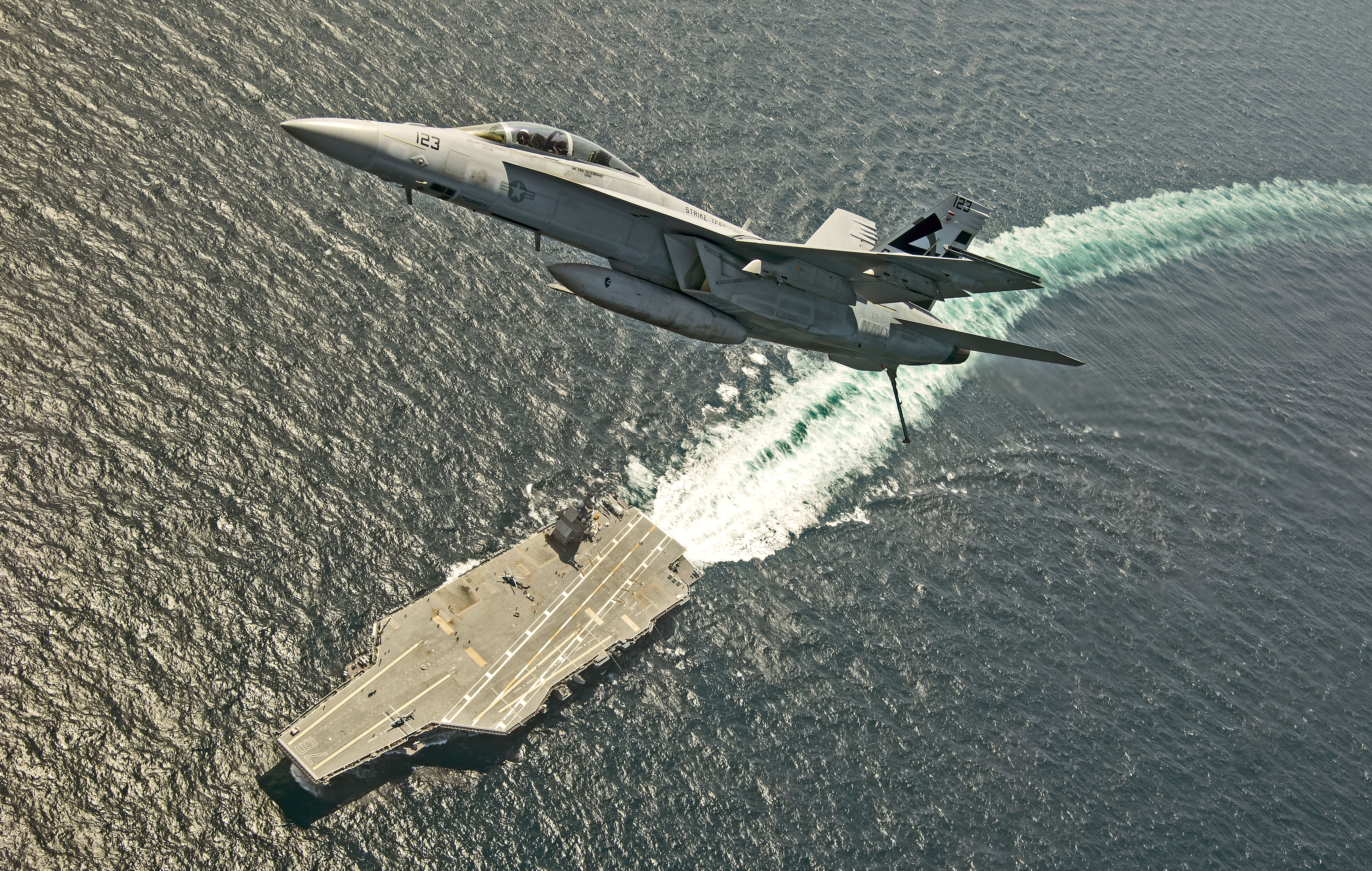
F/A-18F Pilot LCDR Jamie R. Struck the makes first carrier arrested landing using AAG system aboard USS Gerald R. Ford (CVN-78) off the Virginia coast. US Navy Photo
This post has been updated to include additional information from the Senate Armed Services Committee hearing.
CAPITOL HILL – Vice Adm. Michael Gilday promised the Senate Armed Services Committee that, if he were confirmed to serve as the next chief of naval operations, he would be transparent about ongoing challenges with the first-in-class USS Gerald R. Ford (CVN-78) and ensure that other new programs like the Columbia-class ballistic missile submarine avoid the same pitfalls.
During Gilday’s confirmation hearing today, SASC Chairman Sen. Jim Inhofe (R-Okla.) was critical the Ford-class program, telling Gilday that the carrier fleet has been forced to operate with one-too-few ships since USS Enterprise’s (CVN-65) decommissioning in 2012 due to Ford’s failures.
“The Ford was awarded to a sole-source contractor” and asked to incorporate immature technologies with “next to no testing and (that) had never been integrated on a ship: a new radar, arresting gear, and the weapons elevators,” Inhofe said.
“The Navy entered into this contract in 2008, which, combined with other contracts, ballooned the cost of the ship to more than $13 billion without understanding the technical risk, the cost or the schedules. This ought to be criminal.”
Inhofe said Ford is a “great ship” that is needed in the fleet, but he said a visit to the Newport News Shipbuilding yard left him feeling that “there was a level of arrogance that, it didn’t really make any difference that the elevators don’t work,” noting that only two of the 11 weapons elevators are currently installed and working.
Despite a promise from Navy Secretary Richard V. Spencer in January that the elevators would be complete by the end of the ship’s post-shakedown availability at Newport News – which was set to end this month but has been pushed back to October – or else President Donald Trump could fire him, there has been insufficient progress on the elevators, Inhofe charged.
“At that time, Ford was supposed to pull out from its maintenance period this month. The departure has since been delayed until October. Even with this delay, only two of the 11 elevators are going to be ready in October. Nine elevators will not be ready and likely will not be complete until 2020 or later. The secretary’s promise to the president eight months ago indicates either poor knowledge of the facts or poor judgment. This is the latest example of Navy leaders not being straightforward when it comes to their programs. That’s quite a charge, isn’t it?”
Inhofe asked Gilday to weigh in, since “this is going to be dumped in your lap.”
Gilday said “I share your concern” and added that, while as many as four elevators may be done by the end of Ford’s PSA, “it’s still unacceptable. We need all 11 elevators working in order to give us the kind of redundancy and combat readiness that the American taxpayer has invested in this ship.”
“We’ve had 23 new technologies introduced on that ship, as you know. Of those, four were immature when we commissioned Ford in 2017. We have seen progress in the launching system, the arresting gear and also with the dual-band radar. The reliability of those systems is trending in the right direction and actually where we want to be based on the last at-sea testing,” Gilday said.
“It’s the elevators, I think, that is the remaining hurdle to get over to get that ship at sea.”
Gilday vowed to be transparent with SASC on the program’s progress and that the Navy would take lessons learned from the Ford-class program and ensure that other first-in-class ships, including the ongoing Columbia-class SSBN, would not make the same mistakes in managing risk.
Sen. Tim Kaine (D-Va.) asked Gilday during the hearing about lessons learned from Ford‘s challenges.
Gilday said that, “of the 23 new technologies that we introduced on Ford, [engineers early in the program] did not consider the elevator system to be high risk. And so it wasn’t prototyped ashore” and given the same risk-management approach that other systems, like the new aircraft launch and recovery systems, were given in the years leading up to their installation on the ship.
Gilday said the advanced weapons elevators were new to the Navy, but the engineers considered them less risky because the technology already existed in industry, such as in large warehouses. Still, he said, the Navy took away from this experience that it is “absolutely critical … that if we’re going to introduce new technologies, that they are prototyped adequately and proven before we go to production.”
“We own the risk and the risk-mitigation strategy to keep that ship on time. And so ultimately I would consider that a failure of the Navy,” he concluded.
For the challenges that remain with Ford‘s elevators, Gilday said that the second-in-class John F. Kennedy(CVN-79) is moving along on a better cost and schedule path than did Ford, and he added that the other new technologies on Ford are performing well now.
“Most recently at sea, for both the electromagnetic launching system as well as the advanced arresting gear, we’ve had almost 800 launches, and for three successive days, each of those days, [the systems were performing] right at the level we see for the existing Nimitz class. So we think we’re on a good path with respect to reliability and sortie-generation rate,” the admiral said.
